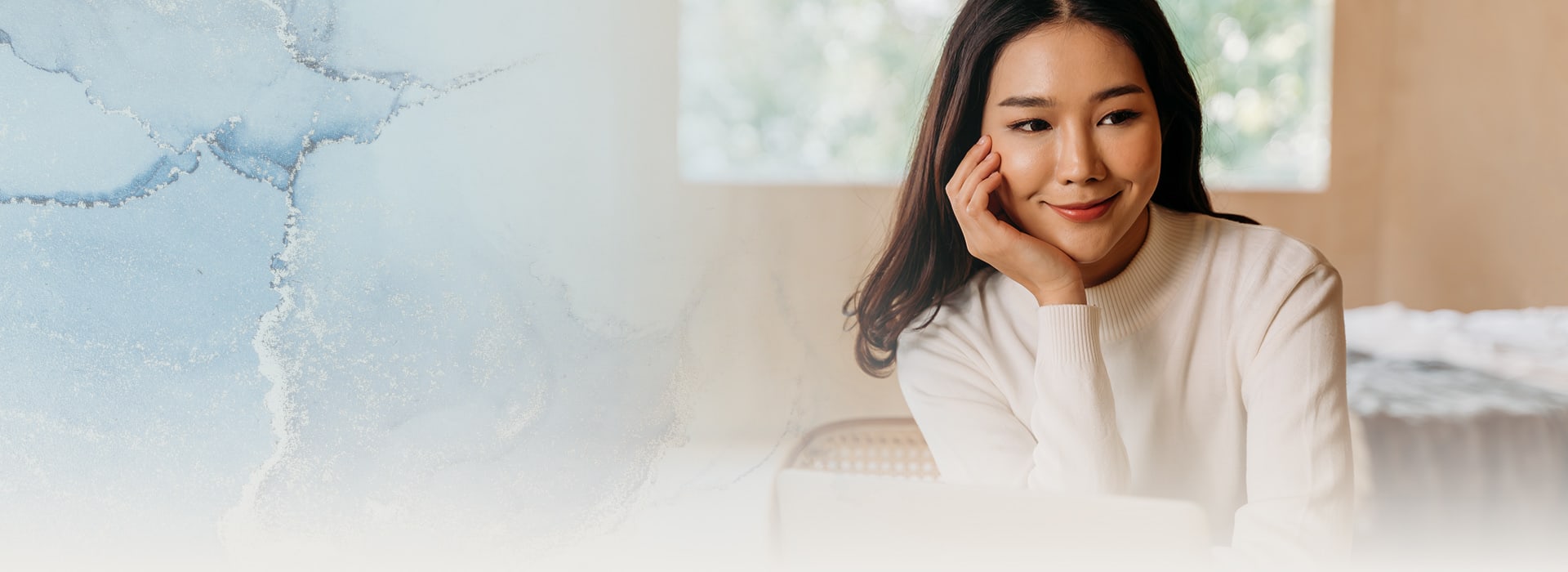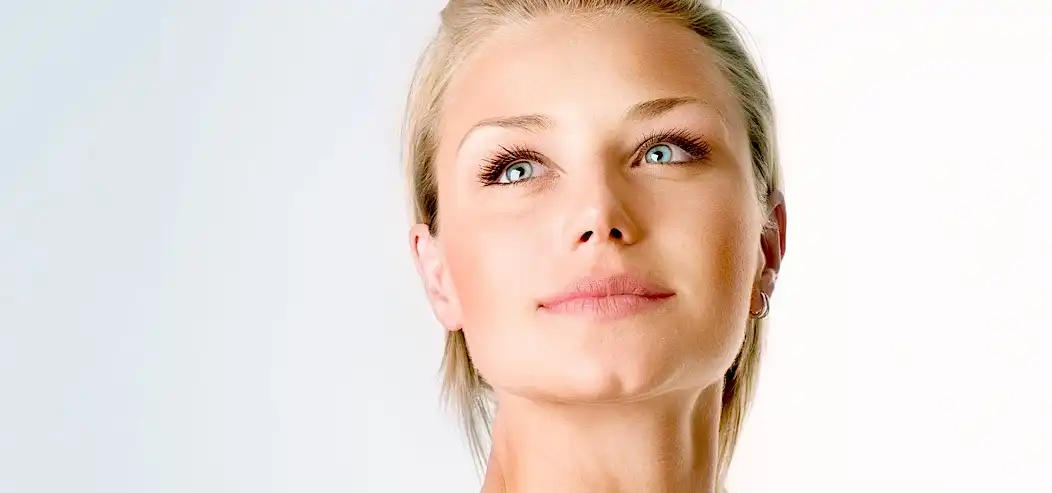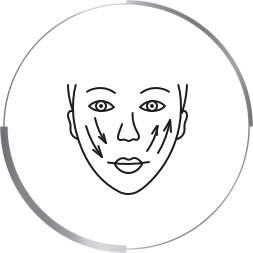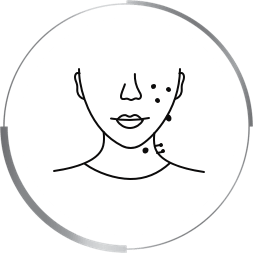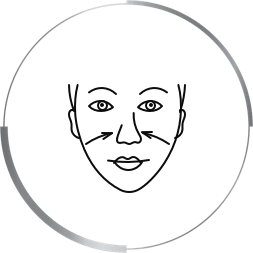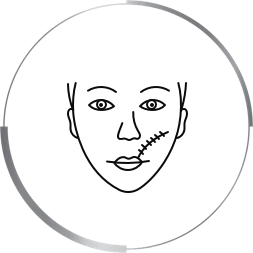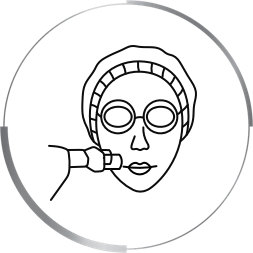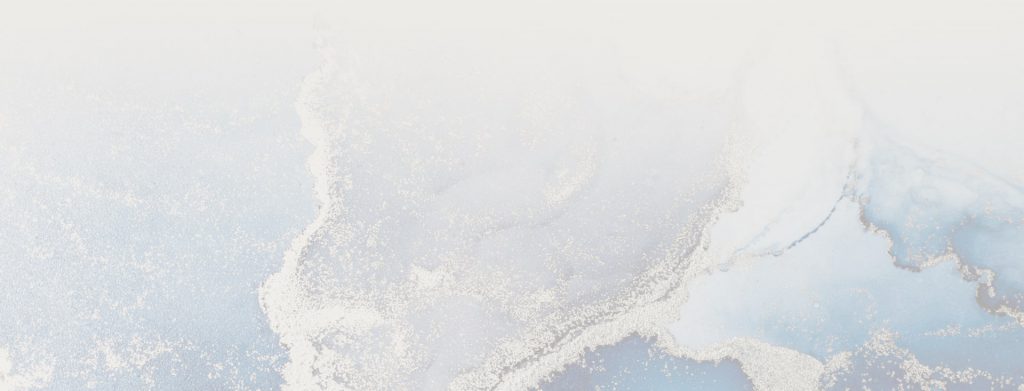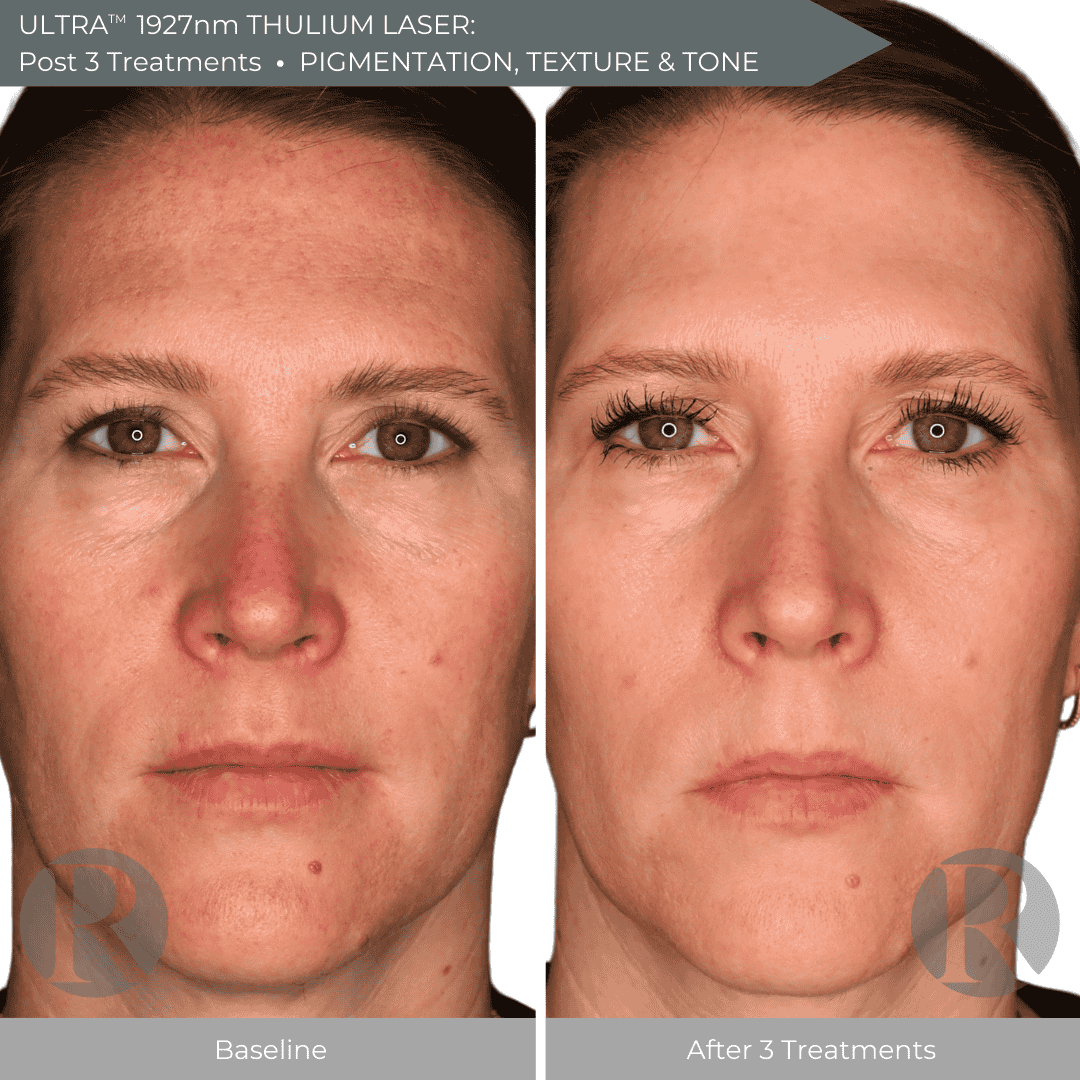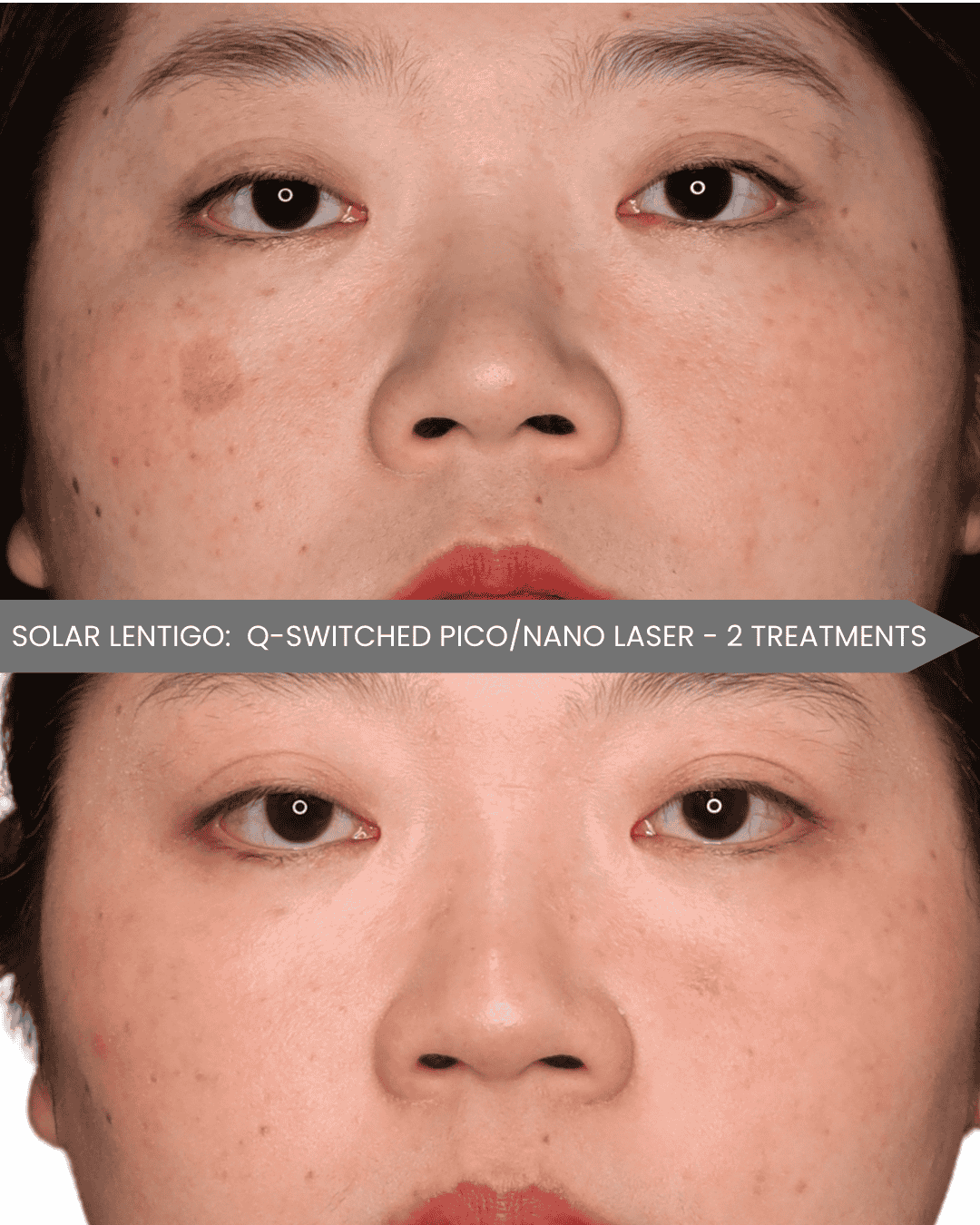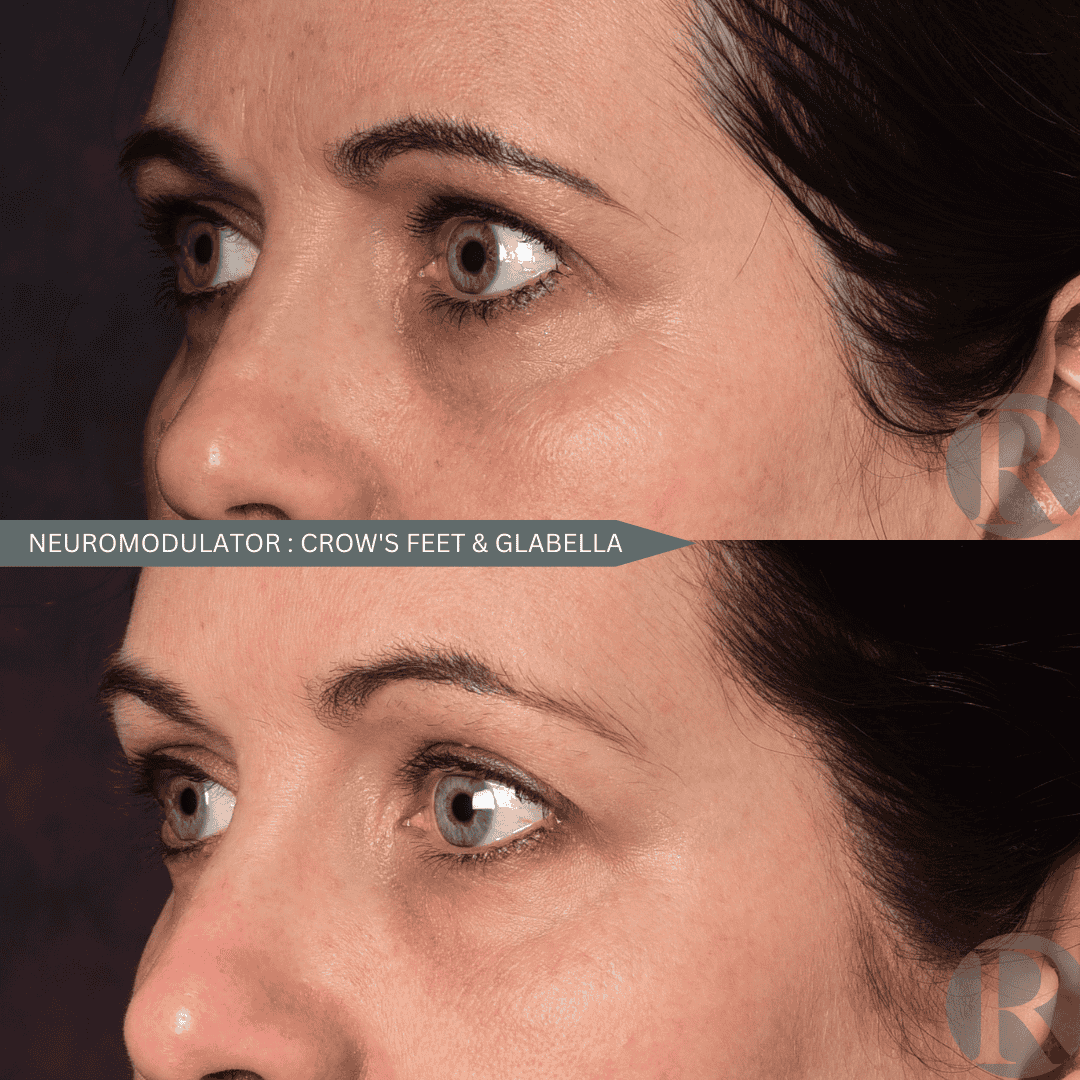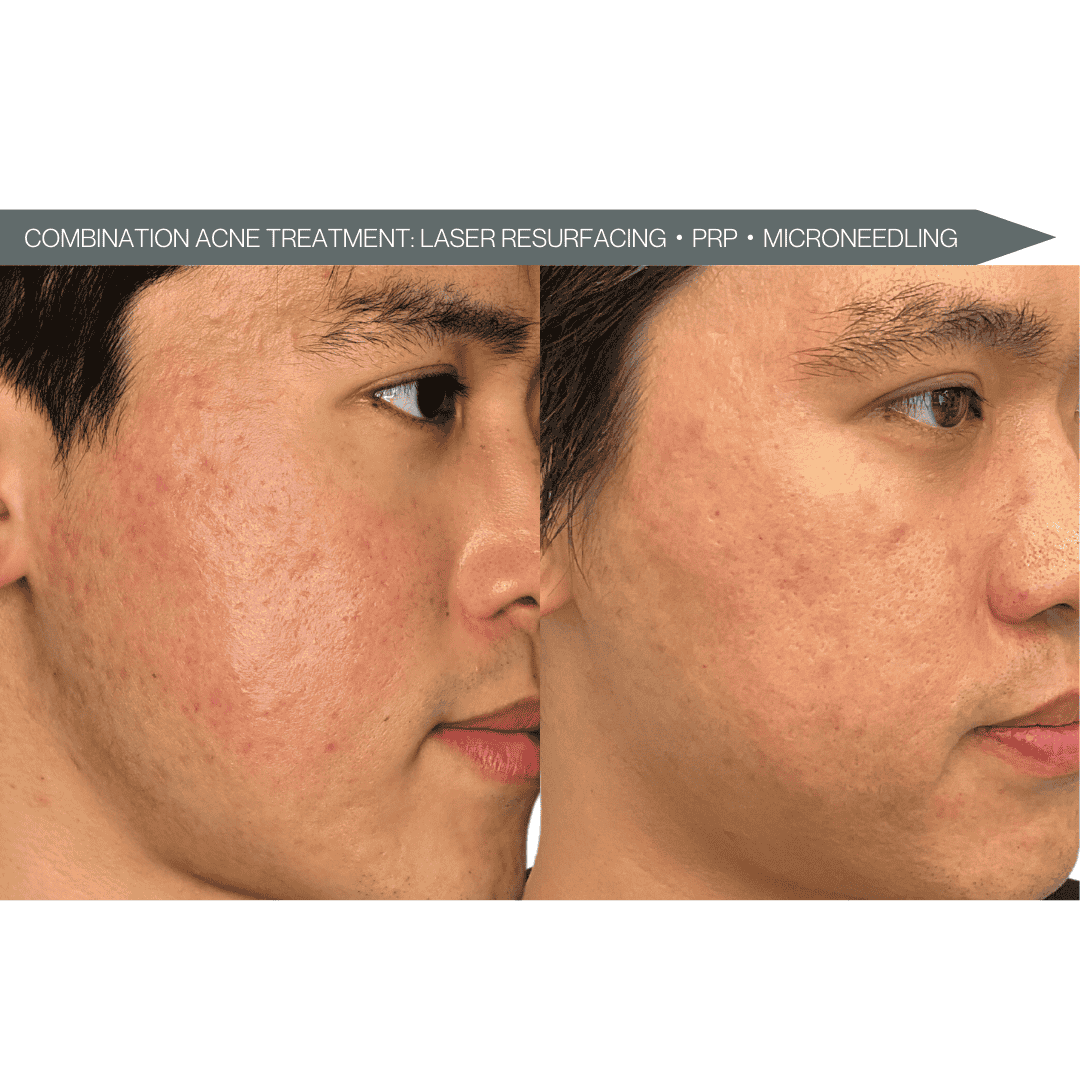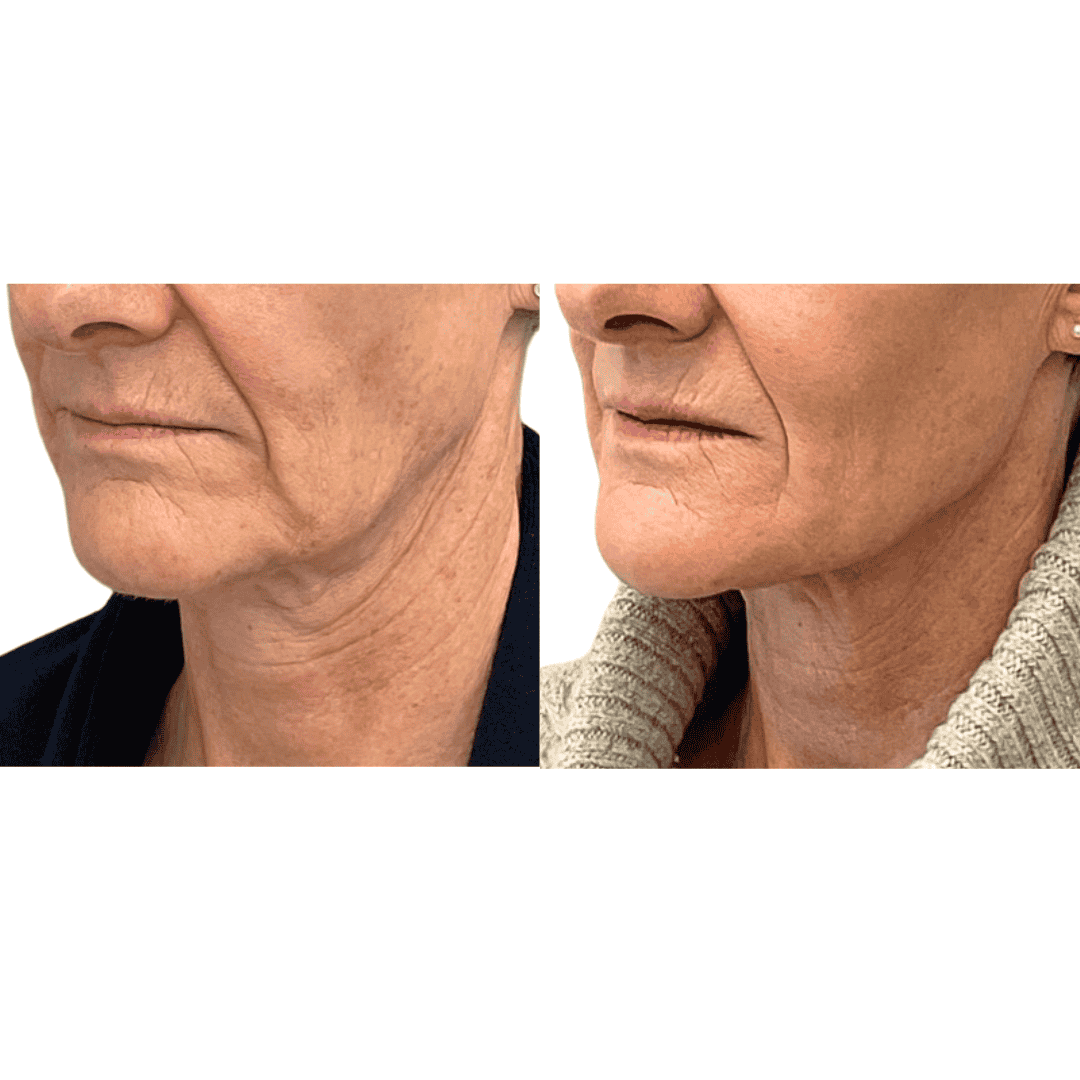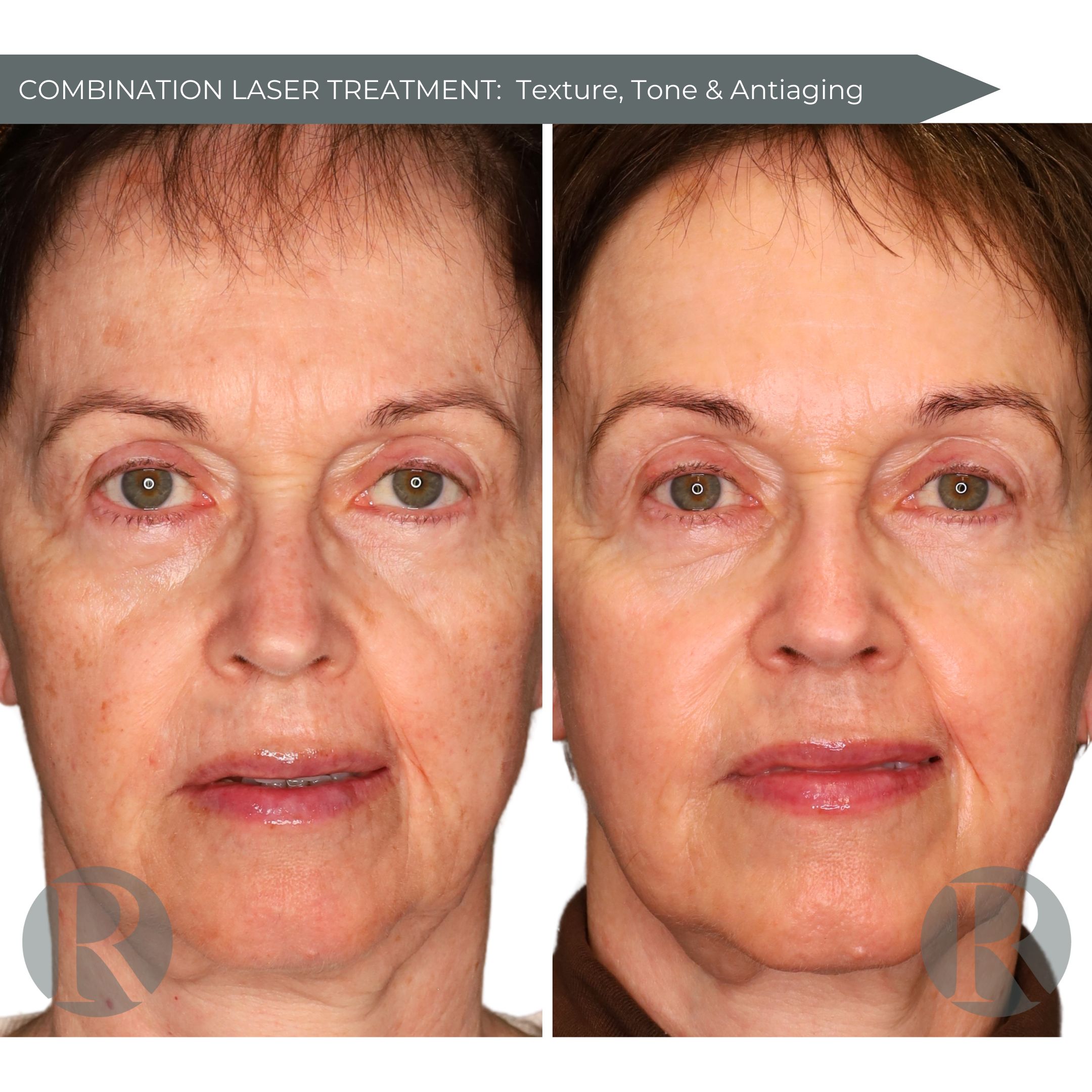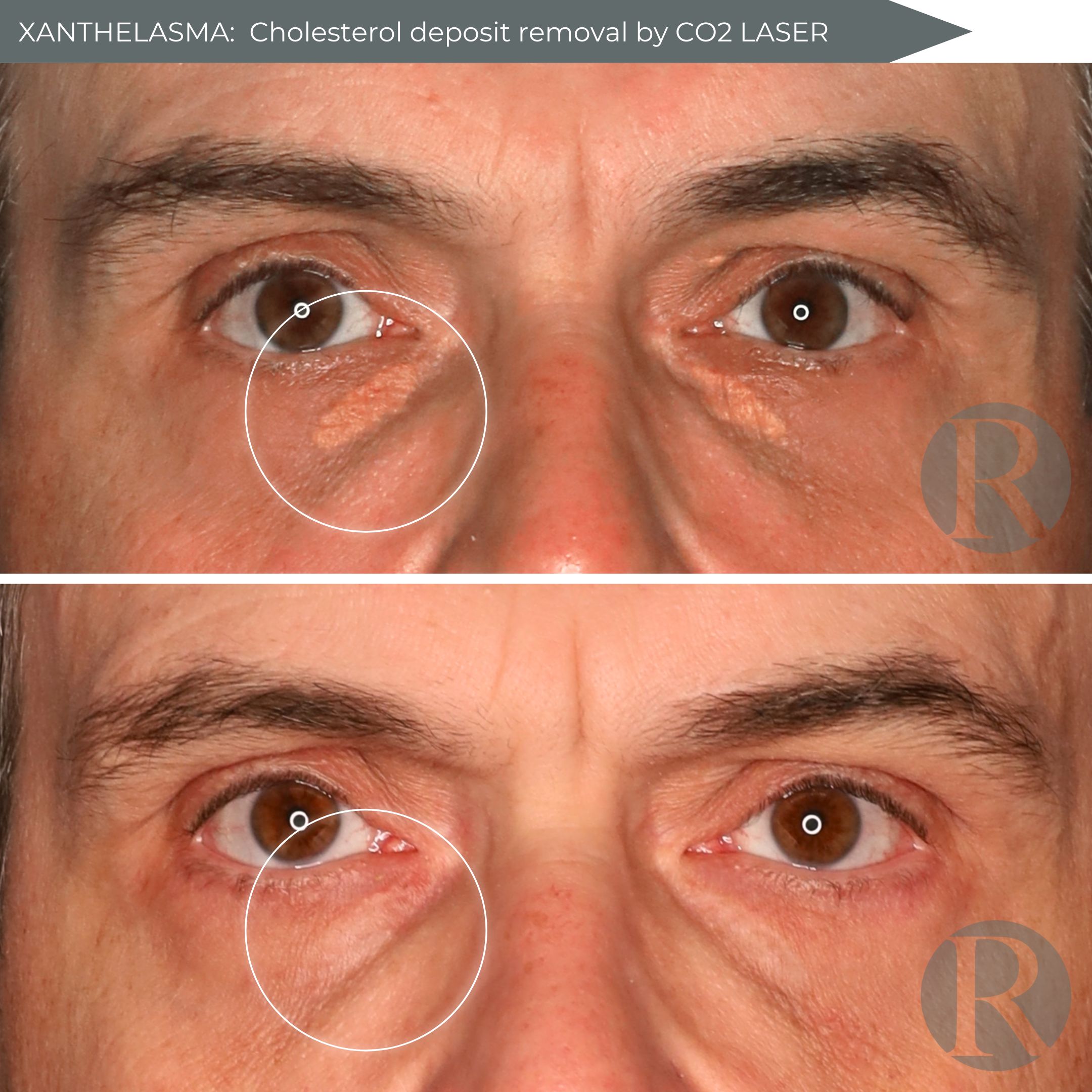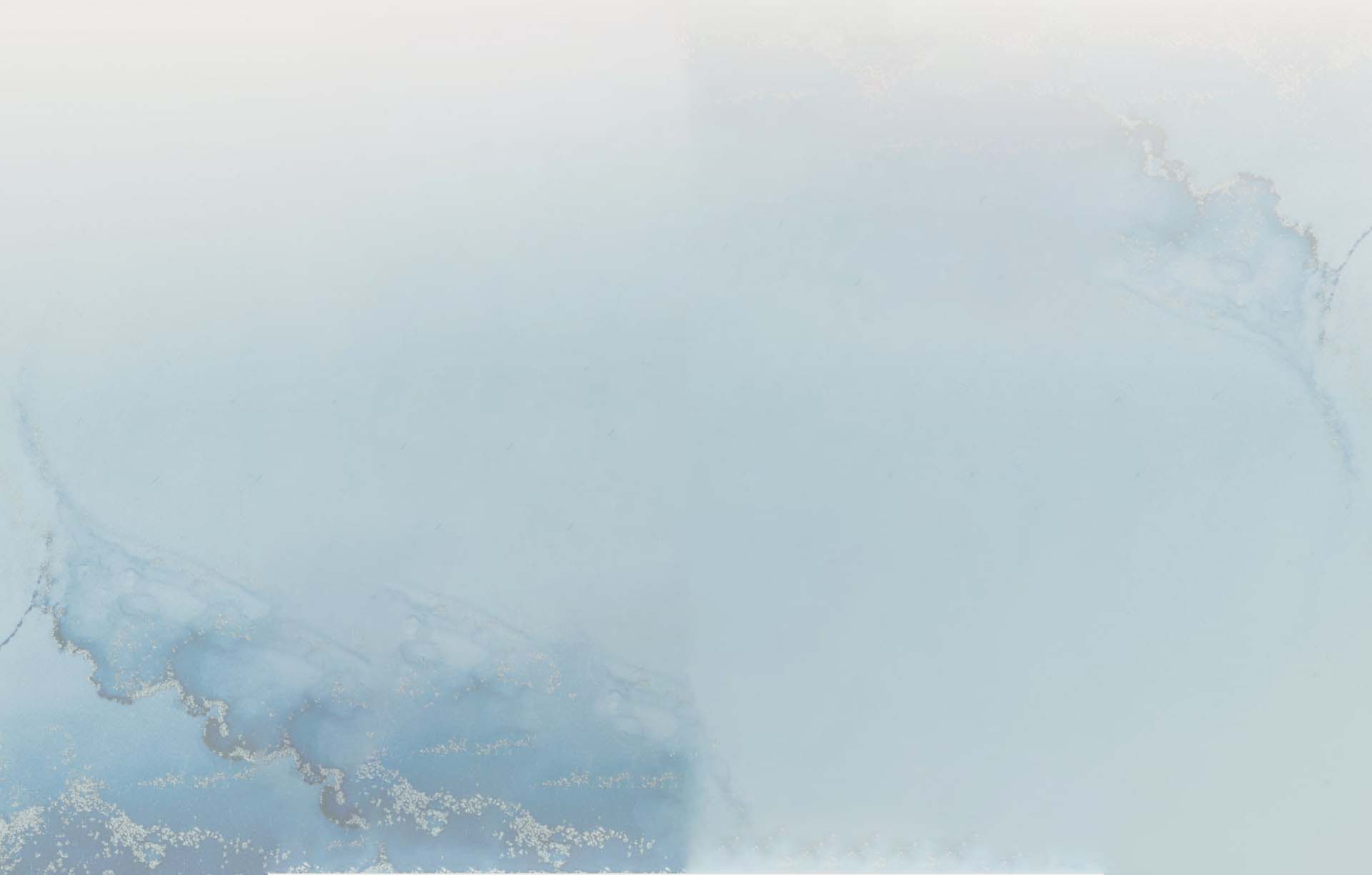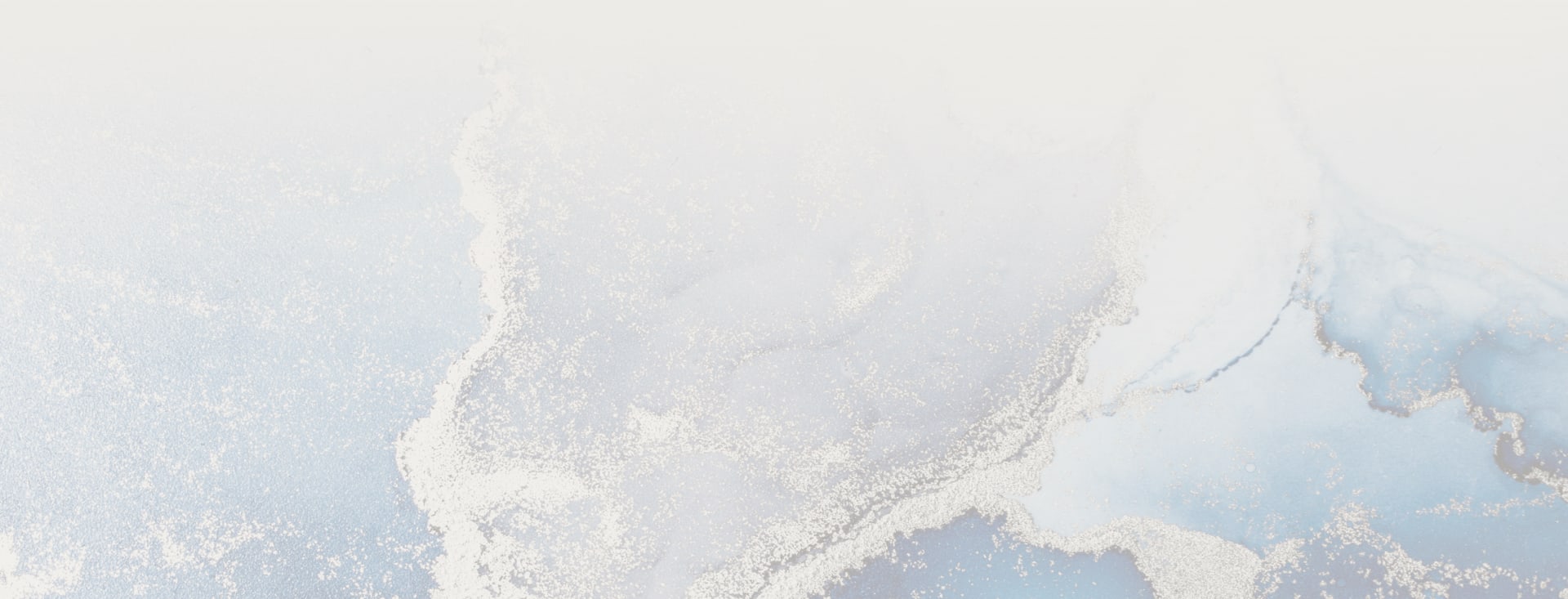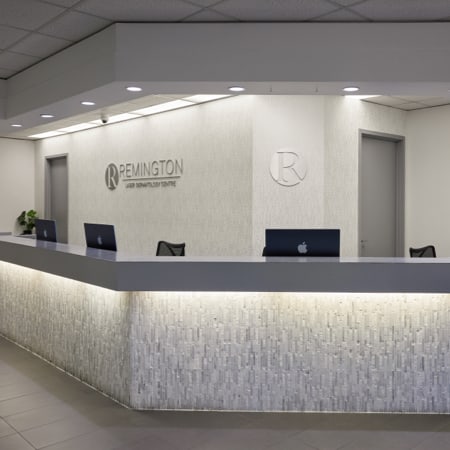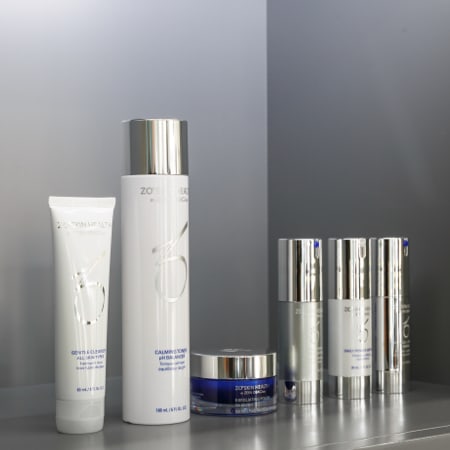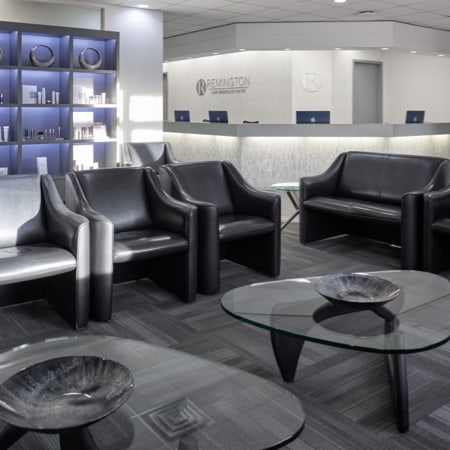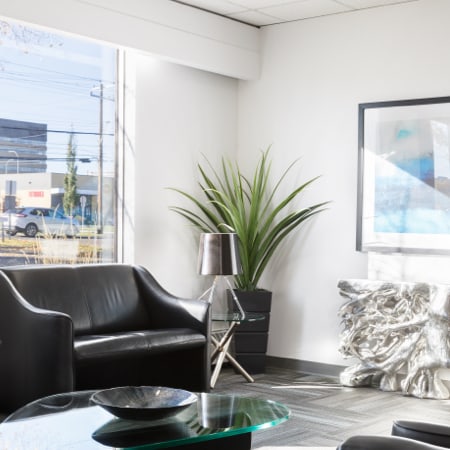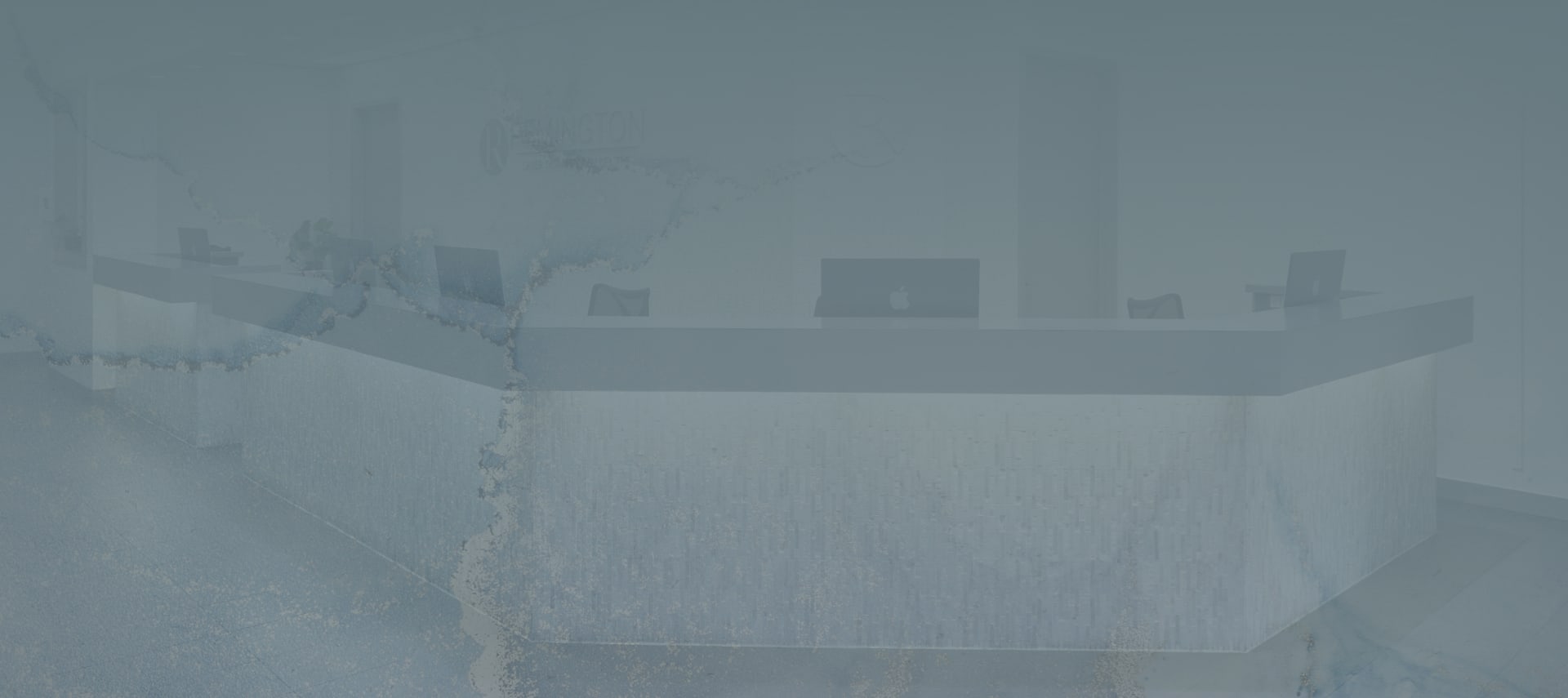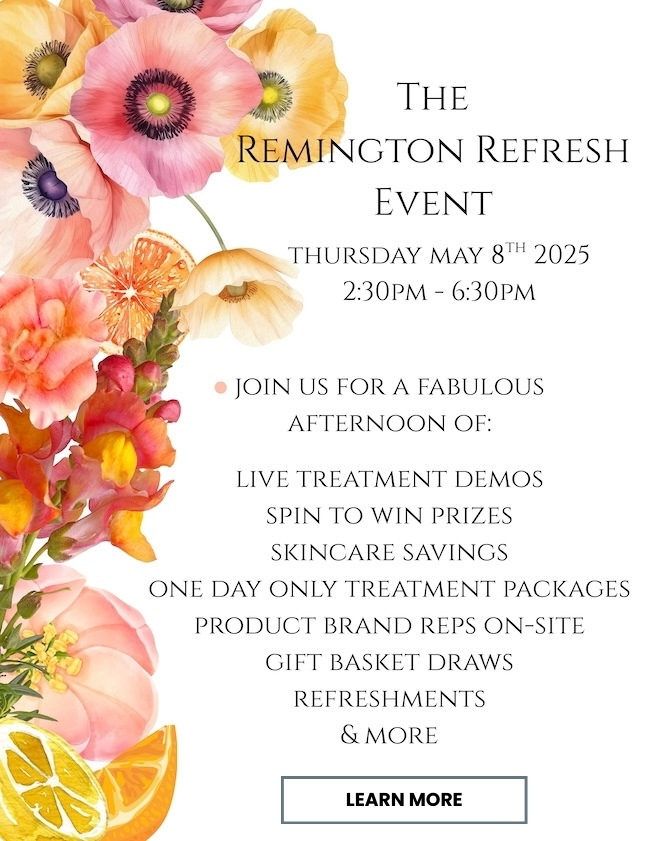The key to younger, healthier looking skin is to prevent damage from occurring in the first place. Regardless of your age, there are several steps you can take to improve your skin’s appearance and prevent further damage from occurring…
In addition, many blemishes inevitably occur on the skin such as wrinkles, lines, scars, lentigos (liver spots), birthmarks and moles. These can be eliminated or at least improved by appropriate dermatological surgical procedures.
- Sun Protection:More than anything else, sun protection will help prevent the aging of your skin. The sun is largely responsible for wrinkling, blotchy pigmentation (melasma and lentigos), thinning of the skin, broken blood vessels (telangiectasias and facial spider vessels), dryness, texture changes, skin cancer, uneven colour and some sun-related skin conditions that make the skin look older. If you are unconvinced, just look at the skin on the inside of your upper arm and compare it to sun exposed areas. Daily use of sun screen with a least an SPF of 15 along with protective clothing such as full-brimmed hats, long sleeved blouses and shirts and slacks instead of shorts, will greatly reduce the aging of the skin and the possibility of skin cancer. Your skin has a perfect memory for sun exposure. For example, the sun you had on July 1st when you were fifteen is still there when you are forty. Sun glasses will also protect the eyelids from aging and will help reduce crow’s feet by reducing the squinting which comes from sun exposure without eye protection.
- Avoid Smoking: Smoking is disastrous to the skin. Medical studies have proven that smoking ages the skin. The changes that are seen include wrinkling along with colour and texture changes. There is nothing you can do that will benefit your skin and overall health more than not smoking.
- Fitness: With age, extra weight can accumulate in areas under the chin, face and neck giving the skin an older look. A combination of balanced nutrition and exercise can greatly improve the appearance of the skin. Drinking enough water is also important and it is recommended that you drink approximately 6-8 glasses of water a day.
- Smile – it’s good for your face! Your face tends to conform to the position or expression that you carry most of the time. If you often frown or scowl, your skin is more likely to develop lines or wrinkles between the eyes, downward turning lines at the corners of the mouth, or other lines or furrows that conform to the frowning facial expression. Your appearance before forty years of age is determine largely by genetics. After forty the aging process has a greater impact on how you look than genetics. As a result, how you feel on the inside has a lot to do with how you appear on the outside. A smiling, pleasant, relaxed expression is good for your face and will help keep you looking younger.
- Wrinkles, Lines and Scars: We are now able to remove or improve facial wrinkles, lines and scars with a new procedure calledLaser Skin Resurfacing. Using the UltraPulse™ and Erbium|YAG Lasers, we can gently remove sun-damaged, aging skin layer-by-layer, all during the same treatment visit. On the upper lip, this procedure will eliminate the wrinkles which cause a furrowed look and will also stop “bleeding” of lipstick into the lip wrinkles.Unlike dermabrasion, chemical peels, and superpulsed laser resurfacing, theUltraPulse™ and Erbium|YAG lasers uses high energy beams of light to vaporize or “paint away” lines, wrinkles and other skin defects. Laser light penetrates to a very precise, controlled depth, making the procedure safe and predictable while reducing the risk of scarring or pigmentation. Laser skin resurfacing is bloodless and is preformed right here in our office, without the costs and risks of hospitalization or general anesthesia. Because the laser is gentle, comfort both during and after the procedure is improved and helps give you a more rapid return to your normal routine. The end result is smoother, fresher, younger-looking skin.TheUltraFine™ Erbium|YAG laser can be used alone for fine wrinkles or in combination with the UltraPulse™ CO2 laser. Facial scarring is usually caused by aggressive cystic acne, trauma, burns, surgery or a result of aggressive chicken pox. Facial scars can influence the patient’s self esteem, self image and the social part of his or her life. Most patients seek treatment to improve appearance and the texture of the scar. The management of facial chicken pox scars, post surgical scars, burn scars, hypertrophic and keloid scars is always a treatment challenge. The improvement of post acne ice pick scars and atrophic scars is one of the more difficult challenges in a facial cosmetic practice.Treatment of facial scars is a management project and almost all patients that have some form of facial scarring require a combination of treatment options. The sequence of treatment, syntax, and timing are very important in creating a cosmetic result that most patients are looking for.The following are procedures that have a positive benefit for facial scars:
-
- Simple excision / microblades
- Surgical Revisions
- Trephine Surgery
-
- Micro Dermabrasion
- Surgery
- punch excision (1.0 mm – 4.0 mm)
- punch float
- punch graft
- Laser Surgery – Syntax – Timing
-
- Pigment lasers
- QSR
- QSA
- Vascular Lasers
- P.D.L.
- Vasculight™ / Yag
- Versapulse
- Pigment lasers
-
- High Energy Pulsed CO2 Lasers with CPG
- High Energy Pulsed Erbium|YAG laser with CPG
- Soft Tissue Augmentation (Timing)
- Zyderm I,II, Zyplast
- Restylane, Hylaform
- Artecoll
- Moles: Moles are common skin growths, usually tan to brown to almost black in colour. They can be flat, slightly elevated, or stick out like pieces of cauliflower. They can be pinhead in size or larger than the size of an adult’s hand. Moles are removed to improve appearance, take away a source of irritation, or to prevent the mole from enlarging. Moles that suddenly change in colour or grow rapidly should be evaluated and are usually removed. Other warning signs that a mole may be dangerous include itching, crusting, pain and bleeding at the site of the mole. Extensive and potentially disfiguring scarring can often be prevented by prompt surgical removal of the mole. CO2 laser surgery is my treatment of choice for removing most moles because of the ease of therapy. This method gives an excellent cosmetic result, usually with minimal scarring. Removing regular benign moles by all methods – excision, cautery or CO2 laser – is considered a cosmetic procedure and is therefore the patient’s financial responsibility. Most benign moles do not require removal at all.
- Skin Tags: Skin Tags are fleshy moles that usually occur on the crease fold areas such as around the neck, eyelids, axillae, under the breast area and in the groin. Dermatologists and Plastic Surgeons remove these by various methods. I remove them with either the Superpulsed CO2 Laser or the Ultrapulse CO2 Laser.
- Actinic Keratoses: Actinic Keratoses are warty, rough reddish growths which appear on sun exposed areas of the body. They occasionally develop into skin cancers and are therefore usually treated with cryosurgery, a technique which employs liquid nitrogen from a jet spray. Aggressive individual lesions are now removed with the CO2 laser.
- Seborrheic Keratoses: Seborrheic Keratoses are raised tan to brown to black growths. These are removed in a manner similar to actinic keratoses. They often become itchy and irritated by clothing. They do not turn into skin cancers but are often unsightly.
- Blood Vessels: As we age extra small blood vessels appear in the skin. Four types of blood vessels are most common:
- Telangiectatic linear vessels that look like cobwebs. They appear rather blotchy on the face, side of the neck and upper chest. These are influenced by sun exposure, flushing and genetics.
- Spidery vessels, linear telangiectasias and early varicose veins appearing on the thighs and legs. These may begin during the teenage years and become much more progressive over time. They are most often caused by genetic tendency, hormones and pregnancy. Sclerotherapy, using special injections, can remove these vessels. The Vasculight™ and long pulse YAG are lasers that treat leg veins with or without sclerotherapy.
- Cherry angiomas are small bright red mole like spots on the skin that appear like mileage stickers as you become an adult. Some people, however, will start to develop them during the late teens. Cherry angiomas are completely innocent but become larger, more obvious and more numerous with time. I now treat these with a special Krypton Laser. No needles or local anesthetic are necessary and the process does not leave a scar.
- Visible facial vessels can be treated with a Vasculight™ laser.
- Brown Blotches: Brown blotches generally occur with maturing of the skin. These include freckles, liver spots (lentigos) and uneven blotchy/brown pigmentation called melasma. The Q Switched Ruby Laser is an excellent option for treating the lentigos and certain types of freckles. Fading and bleaching creams combined with microdermabrasion are other treatments we use.
